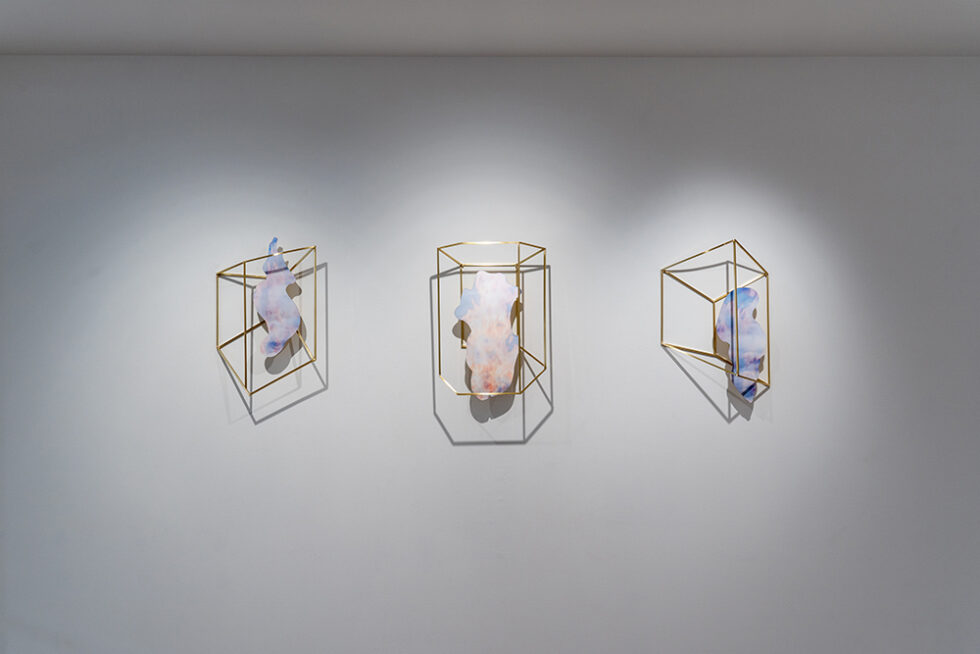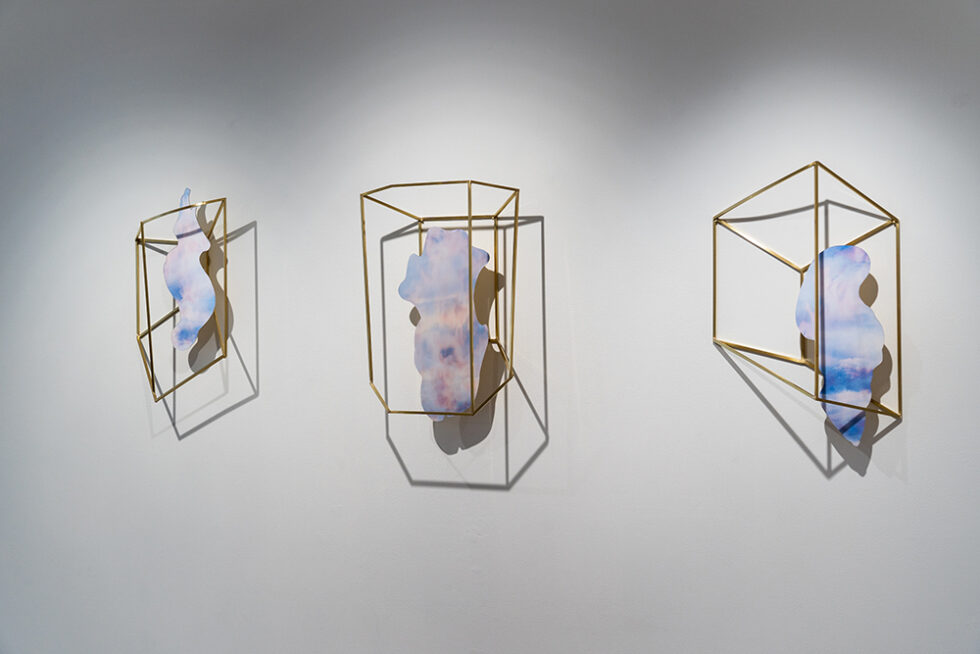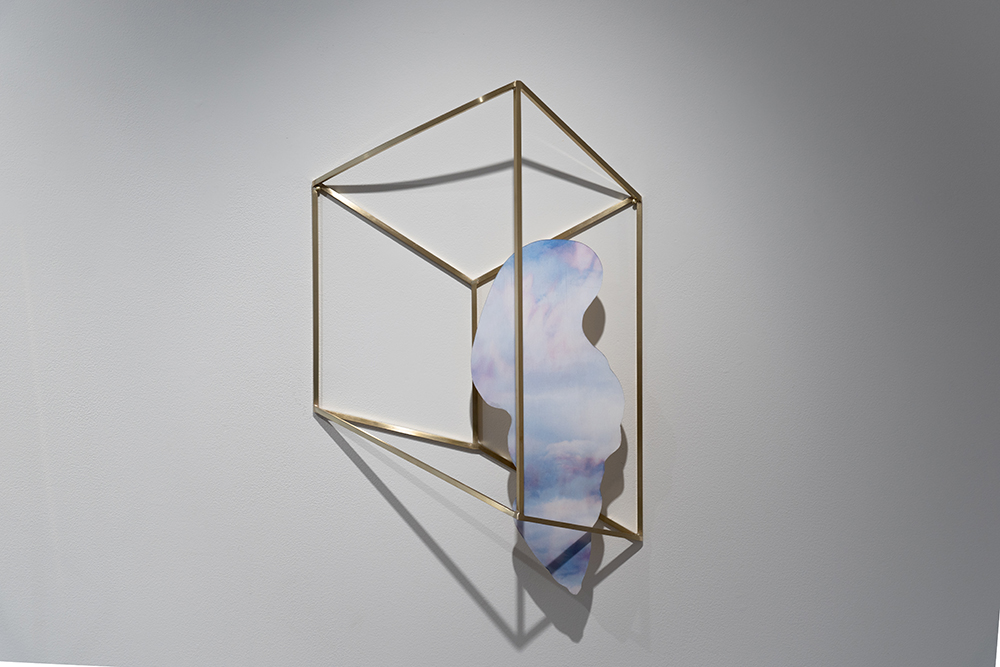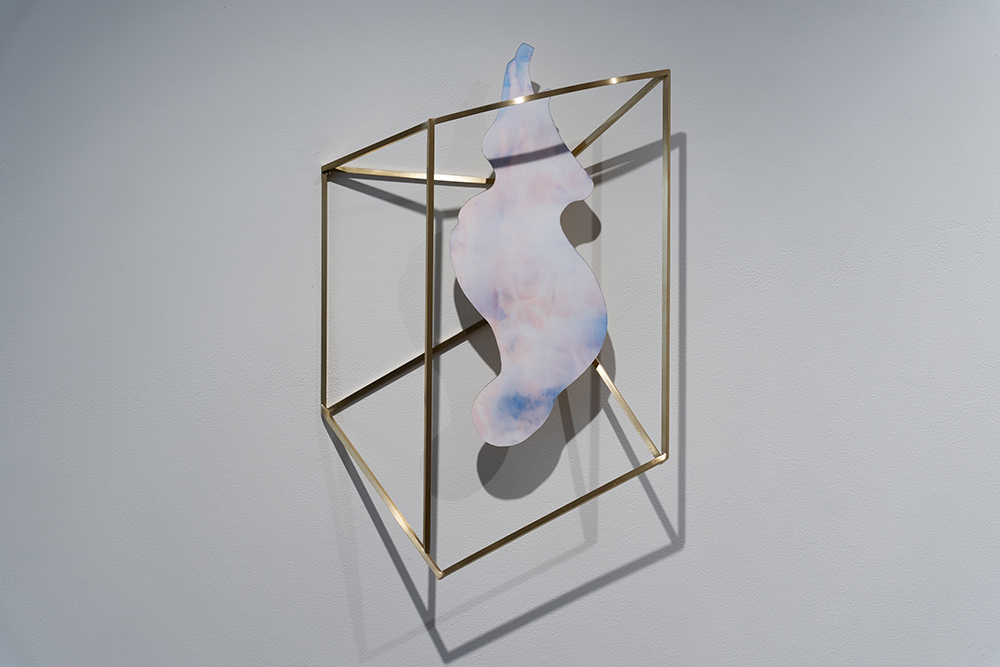Bones and Expansion series”Trilogy of Change: Transformation” / 2024


Size : L)H45, W30, D11 / C)H43, W31, D12 / R)H48, W31, D12 cm
In the new series for this exhibition, entitled Bones and Expansion (2024), Yamada continues his investigation into the interrelation between the body, sensory organs, and media, exploring the reciprocal dynamics of Inclusion. The triptych work from the series employs plane perspective, featuring three- dimensional brass-framed structures, within which the contours of planar forms evoke organic forms. Drawing inspiration in part from Francis Bacon’s space-frames—devices Bacon described as an exploration of painting through sculptural thinking—this work embodies the inversion of sculptural elements and tactile qualities, transposed into two dimensions. The dual-layered structure contrasts the outer frame, which metaphorically mirrors human-constructed systems such as social orders, regulatory frameworks, and the logic of justice, with its inner plane. The inner plane, in turn, consists of two distinct elements: clouds and flames captured through multiple exposures, and varied contours derived from identical seashells, which serve as residual traces of ocean currents and their fluid dynamics. The addition of lenticular lenses to the surface of the inner plane enhances the translucency of the field of vision,3 requiring the viewer to engage with the piece through spatial distance and perspectival engagement. As the observer alters their viewing angle, the piece shifts and distorts, continuously transforming its phases. Within these seemingly abstract planes, Yamada also envisions an extension of consciousness and corporeal forms of diverse life. The spaces of the triptych’s frame remain “open,” as he asserts—within this “in-between”, in its openness, an intermediary realm appears to lie – a domain of intensive relations and continuous transformation.
( Noriko Yamakoshi | Curator )
3. Here, several paths may lead to an understanding of its tactile qualities. For example, in the works of Francis Bacon, the comb-like brushstrokes disrupt the canvas. Also, blurs, low resolution, textures, and visual obstructions are explored in relation to the viewer through Laura U. Marks’ concept of ‘haptic visuality.’ As well as that, in De Anima, the medium is viewed as something that intervenes in the space between, acting as a mediator.
身体や感覚器官と媒体としてのメディウムを接続する実践を通して、包摂し包摂されるという逆転の関係性を考察する山田は、本二人展において新たなシリーズ<骨と拡張>を発表します。平面技法のパースペクティヴを採用した三連作品には、真鍮による立体枠が施され、内側に配された平面形象の輪郭は何か有機形態を想起させます。彫刻の発想を持って絵画制作を試みたと話すフランシス・ベーコンの空間フレームにも触発されている本作には、彫刻性と触覚的なものを二次元に落とし込むという逆転が同時に存在しています。社会構造や規律、正義の論理といった人間が作り出した<枠>の擬態として提示される外側の枠組みと、多重露光で捉えられた雲や炎、流体運動の形骸である同一蠣殻による異なった輪郭から成る内側という二重の仕組みは、表層に施されたレンチキュラーレンズによる半透明な視界3 と共に観者に距離と視点を要請し、作品は見る角度によって歪み、その位相を変えてゆきます。山田はまた、この一見抽象的に象られた平面体の内に意識や身体が延長された多様な生命もみています。そして彼が「開かれている」と話す三つの枠のパースペクティヴ、その「あいだ」には、未決定な領域が潜んでいるかのようです。
(山越紀子|キュレーター)
3. ここに、作品における触覚性への幾つかの道筋が読み取れるかもしれません。例えばベーコン作品においてある種の画面の撹乱として現れる櫛状の塗り、または、ブラー、低解像度、テクスチャ、視覚の遮りなどを手がかりに観者との関係を考察したローラ・U・マークスが提唱する「触感的視覚性」、そして『デ・アニマ』における、中間に介在するものとしての媒体など。 「触感的知覚の考古学」ローラ・U・マークス、『ドゥルーズ・知覚・イメージ 映像生態学の生成』 宇野邦一編、せりか書房、2015 年


